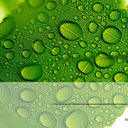pH-sensitive nanoparticles of poly(L-histidine)-poly(lactide-co-glycolide)-tocopheryl polyethylene glycol succinate for anti-tumor drug delivery.
Atslēgvārdi
Abstrakts
A novel pH-sensitive polymer, poly(L-histidine)-poly(lactide-co-glycolide)-tocopheryl polyethylene glycol succinate (PLH-PLGA-TPGS), was synthesized to design a biocompatible drug delivery system for cancer chemotherapy. The structure of the PLH-PLGA-TPGS copolymer was confirmed by (1)H-NMR, FTIR and GPC. The apparent pKa of the PLH-PLGA-TPGS copolymer was calculated to be 6.33 according to the acid-base titration curve. The doxorubicin (DOX)-loaded nanoparticles (PLH-PLGA-TPGS nanoparticles and PLGA-TPGS nanoparticles) and corresponding blank nanoparticles were prepared by a co-solvent evaporation method. The blank PLH-PLGA-TPGS nanoparticles showed an acidic pH-induced increase in particle size. The DOX-loaded nanoparticles based on PLH-PLGA-TPGS showed a pH-triggered drug-release behavior under acidic conditions. The results of in vitro cytotoxicity experiment on MCF-7 and MCF-7/ADR cells showed that the DOX-loaded PLH-PLGA-TPGS nanoparticles resulted in lower cell viability versus the PLGA-TPGS nanoparticles and free DOX solution. Confocal laser scanning microscopy images showed that DOX-loaded PLH-PLGA-TPGS nanoparticles were internalized by MCF-7/ADR cells after 1 and 4h incubation and most of them accumulated in lysosomes to accelerate DOX release under acidic conditions. In summary, the PLH-PLGA-TPGS nanoparticles have great potential to be used as carriers for anti-tumor drug delivery.




